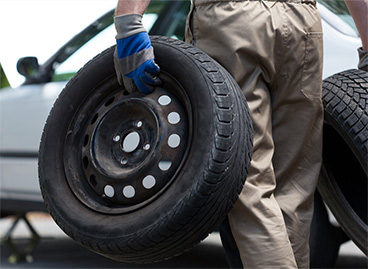
What tire should I choose
The type of tire you should use depends on various factors, including your vehicle type, driving conditions, climate, and personal preferences. Here are some considerations to help you determine the right kind of tire for your needs:
-
Vehicle Type:
- Passenger Cars: If you drive a standard sedan or coupe, passenger tires (designated by the “P” in the tire code) are typically suitable.
- Light Trucks/SUVs: For trucks, SUVs, or crossovers, you might need light truck (LT) tires, especially if you frequently carry heavy loads or tow trailers.
-
Driving Conditions:
- All-Season Tires: These are suitable for most driving conditions, providing a good balance of performance in dry, wet, and light snow conditions.
- Summer Tires: If you live in an area with mostly warm and dry conditions, summer tires can offer enhanced performance but may not perform well in winter or cold temperatures.
- Winter Tires: If you experience harsh winter conditions with snow and ice, consider winter tires for improved traction and safety.
-
Climate:
- Consider the climate in your region. Hot climates might require tires with good heat resistance, while colder climates may necessitate tires with better traction on snow and ice.
-
Tread Life:
- Tires come with different tread life warranties. If you do a lot of driving, especially long distances, you may want tires with a longer tread life.
-
Performance Requirements:
- If you’re looking for high-performance characteristics, such as improved handling, cornering, and speed capabilities, you might consider performance or sport tires.
-
Budget:
- Your budget is an important factor. While it’s essential to invest in quality tires for safety and performance, there are various options available at different price points.
-
Tire Size:
- Ensure that the tires you choose match the specifications recommended by your vehicle’s manufacturer. This information is usually found in the owner’s manual or on a placard inside the driver’s side door.
Before making a decision, it’s a good idea to consult your vehicle’s owner’s manual for the manufacturer’s recommendations. Additionally, tire professionals at reputable tire shops can provide guidance based on your specific driving habits and the conditions you regularly encounter.
#Tires #AffordableTires #CheapTires #Winda #Boto #TireShop #Calgary #Alberta #RedDeer #Lethbridge #Kelowna #BristishColumbia #Canada #AllSeason #Summer #Snow #Winter #AllTerrain #MudTerrain #Michelin #GoodYear #Bridgestone #BFGoodrich #Continental #Hankook #Pirelli